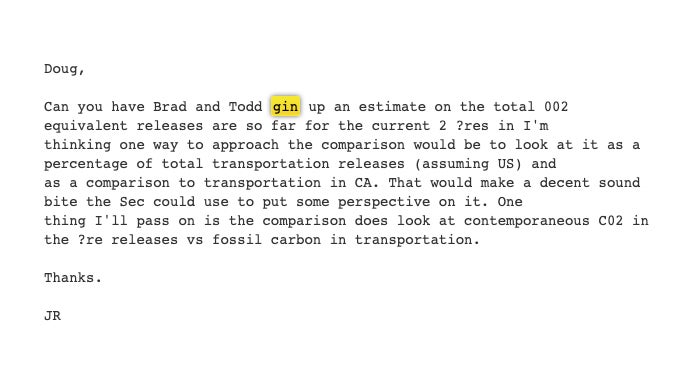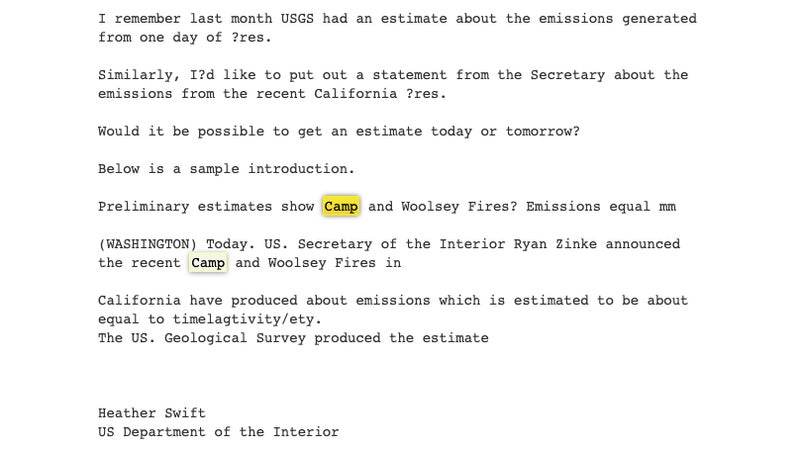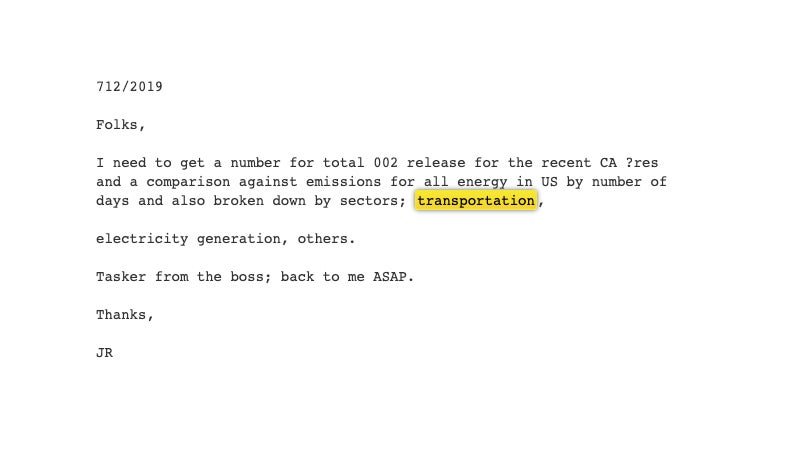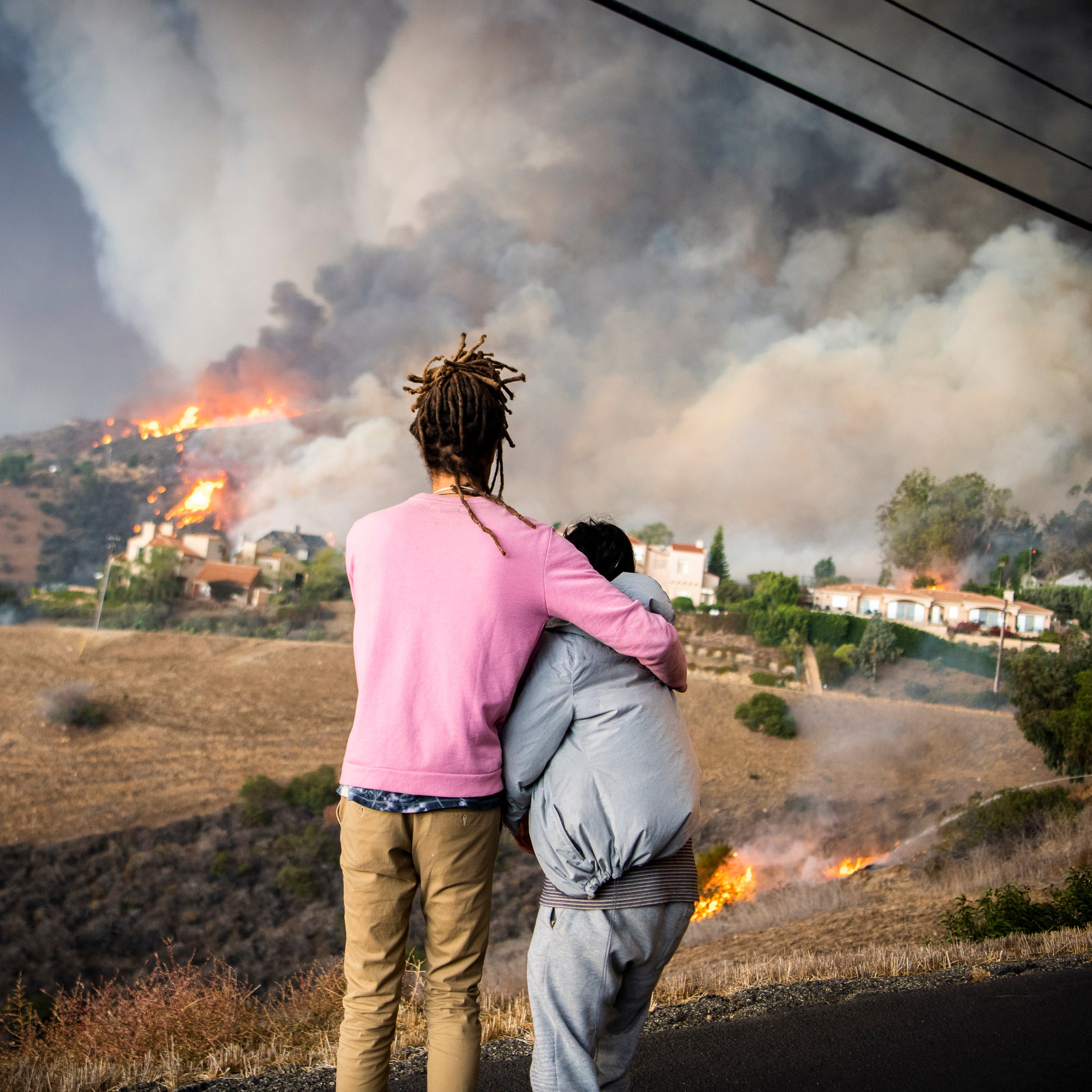In November, 2018, the Camp and Woolsey Fires , killing 88 people, destroying over 20,000 buildings, and together costing $22.5 billion. It was the deadliest, most destructive month for wild fires in California ever, and the Camp Fire alone was the costliest natural disaster anywhere in the world in 2018. Emails obtained by last month show the Trump administration asked its scientists to manipulate data about emissions produced by the fires to support its promotion of the logging industry.��
“Can you have Brad and Todd gin up an estimate on the total [CO2] equivalent releases are so far for the current 2 [fires],” wrote James Reilly, director of the United States Geological Survey in an email to agency scientists on November 16, 2018. “That would make a decent sound bite the [Secretary of the Interior] could use to put some perspective on it.” Reilly is a Trump appointee with a record of .��

At the time, that Secretary was Ryan Zinke, who hadn’t yet resigned from the position over corruption allegations. On November 30, the Department of the Interior claiming that the 2018 wildfire season in California had emitted roughly 68 million tons of carbon dioxide. “This number equates to about 15 percent of all California emissions, and it is on par with the annual emissions produced by generating enough electricity to power the entire state for a year,” stated the press release.
Then-Secretary Zinke was quoted in that release: “We know that wildfires can be deadly and cost billions of dollars, but this analysis from the U.S. Geological Survey also shows just how bad catastrophic fires are for the environment and for the public’s health. There’s too much dead and dying timber in the forest, which fuels these catastrophic fires. Proper management of our forests, to include small prescribed burns, mechanical thinning, and other techniques, will improve forest health and reduce the risk of wildfires, while also helping curb the carbon emissions. The intensity and range of these fires indicate we can no longer ignore proper forest management. We can and must do a better job of protecting both the forests and the communities on the urban-wildland interface. Leaving forests unmanaged is no longer a safe option.”

Four months prior to the release, Zinke arguing that “active forest management,” (Zinke’s very politically correct term for logging) was the only tool that could address the state’s wildfire problem, and claiming that “radical environmentalists” were putting lives and homes at risk by working to limit or prevent that logging. I fact checked that op-ed, demonstrating that logging cannot be shown to reduce instances or severity of wildfires, and that the “radical environmentalists” cited in Zinke’s piece were actually working in partnership with the logging industry to try and create more fire-resilient forests and more profitable logging practices.��
Of course, Zinke’s claims about the efficacy of logging weren’t the only factual inaccuracy. Scientists have since questioned the validity of the carbon emissions the USGS ginned up in support of the former-Secretary’s messaging.��
Chad Hanson, a forest ecologist and founder of the ,” told The Guardian that the emissions numbers produced for Zinke by the USGS were an “overestimate,” and said they, “can’t be squared with empirical data.” The USGS numbers also under represent emissions caused by the burning of fossil fuels by cherry picking data. While electricity consumed by California in 2017 did produce just over 60 million tons of CO2, that particular data point covers just one of many sources of greenhouse gas emissions emitted in the state, which The emails show Reilly searching for such a comparison; he first asked his scientists to compare fire emissions to that of the state’s transportation.��

All this is doubly problematic because these falsehoods soon left the realm of propaganda, and entered actual policy. Less than a month later, on December 21, President Trump issued an executive order calling for . The purpose? “For decades, dense trees and undergrowth have amassed in these lands, fueling catastrophic wildfires,” the order read. “Active management of vegetation is needed to treat these dangerous conditions on Federal lands but is often delayed due to challenges associated with regulatory analysis and current consultation requirements.”
That order goes on to mandate that DOI and the Department of Agriculture (which manages the United States Forest Service) exploit existing categorical exclusions and create new ones, in a move intended to reduce the public’s role in decision making under the National Environmental Protection Act.��
This order was the culmination of a months-long disinformation campaign led by then-Secretary Zinke and President Trump, intended to shift the blame for the fires away from climate change, and onto California’s liberal government, with which Trump continues to feud. At the same time that Reilly was ordering his scientists to manufacture emissions numbers for the fires, the President made his bizarre claims in 2018 about the effectiveness of “raking” forests to clear their dense underbrush. And it was in August of that year, while the Carr Fire raged, that Trump issued his bizarre tweet about California diverting water into the ocean that was needed for fire fighting.��
That tweet appears to be connected to the work of David Bernhardt, who was Zinke’s deputy, and has since succeeded him as Interior Secretary. At the time, Bernhardt was threatening to sue California for objecting to actions he was taking in benefit of a former lobbying client—Westlands Water District, an agricultural water provider. One of Bernhardt’s first actions upon taking office was to divert water from northern California to the state’s central valley, an area controlled by WWD. .��
And there was one other policy action that almost took place as part of this effort to justify the expansion of logging as a fire management tool. The month after that executive order, on January 9, 2019, President Trump threatened to withhold Federal Emergency Management Agency disaster relief funds from victims of the fires in California, again under the guise of arguing that the state was not effectively managing its forests. That’s the very argument Zinke was trying to add to, using those ginned up numbers on carbon emissions.��
Connect these dots, and we see an administration that is willing to falsify information on deadly natural disasters in order to speed its rollback of environmental regulations in benefit of industry. And, rather than take effective actions to address the cause of these fires, is actually worsening the chances of fires burning out of control in the future both by reducing the fire resiliency of forests, and speeding the effects of climate change. While that’s going on, the President is to cut off federal aid to the victims of these fires, in what appears to be an effort to support all the above.��
“Photographing the Woolsey Fire, I watched people flee for their lives, only to later realize they’d just lost everything,” says , who took the photo on top of this article. “It’s unimaginably cruel to exploit these tragedies for any political gain. Let alone to do so for a cause that will make fires like these more common, and more destructive.”


